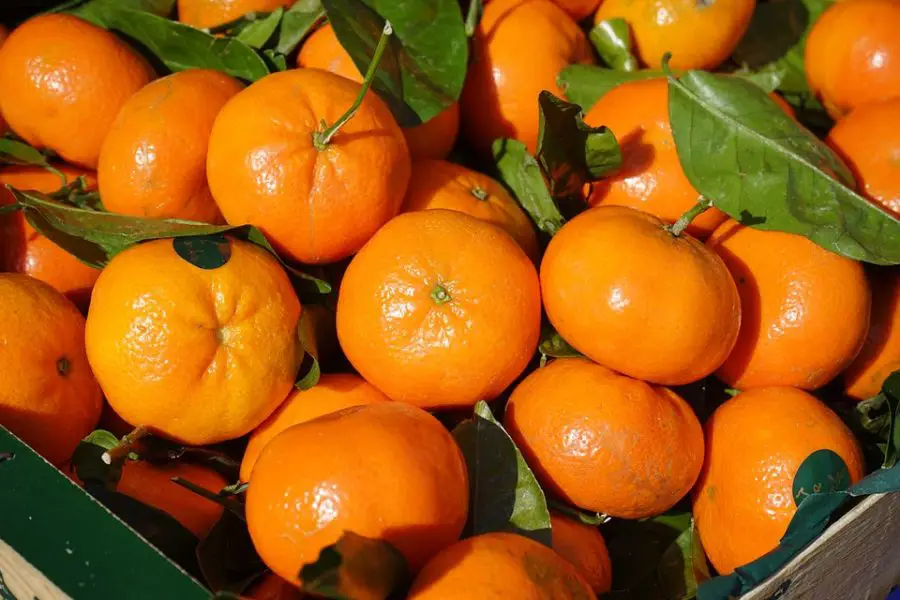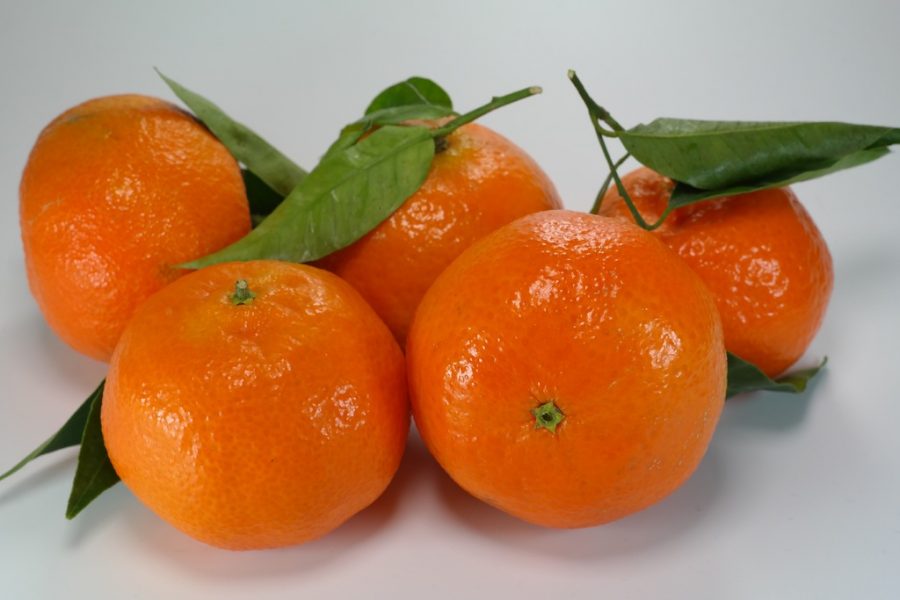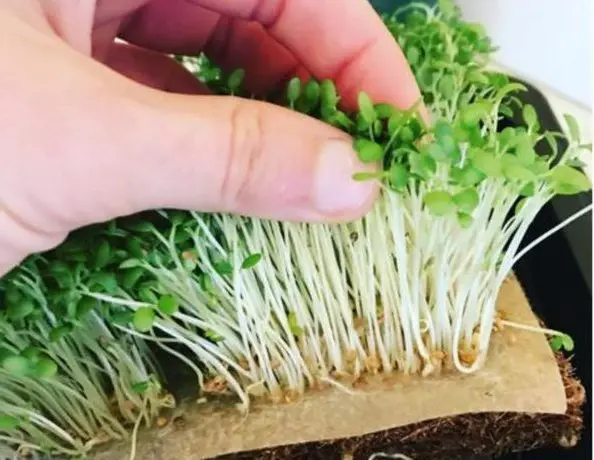This post contains affiliate links. If you buy something from one of our links we may earn a commission. Thanks

Have you ever dreamed of plucking a juicy orange or a tangy lemon straight from your own tree, even in the dead of winter?
Growing indoor citrus trees requires ample light, well-draining soil, and consistent moisture. Place the tree near a south-facing window for at least 6-8 hours of sunlight daily. Water when the top inch of soil is dry, and fertilize with citrus-specific fertilizer every 6-8 weeks.
Growing indoor citrus trees can make this dream a reality!
Indoor Citrus Trees Benefits
Indoor citrus trees can add a tropical touch to any room and can bring a sense of warmth and cheer to a space.
The glossy green leaves and fragrant blossoms of these plants can help to create a soothing and inviting atmosphere.
In addition to their aesthetic appeal, indoor citrus plants offer several benefits.
They can help to purify the air by removing toxins and releasing oxygen, which can improve indoor air quality.
Citrus trees also produce fruit, which can be a healthy and tasty addition to your diet. Growing your own citrus fruit can also be a rewarding and satisfying hobby.
You can find indoor citrus trees for sale at some local nurseries, garden centers, or online. Make sure you are buying a grafted tree and not one grown from seed.
Caring for an indoor citrus tree can also be a relaxing and therapeutic activity. Watering and tending to the plant can be a calming and meditative experience, and the act of watching a plant grow and thrive can be a source of joy and pride.
Overall, indoor citrus trees can be a beautiful and functional addition to any home, bringing both visual appeal and practical benefits.
Growing Indoor Citrus Trees
Not only do these plants provide a year-round source of fresh fruit, but they can also improve the air quality in your home.
While it can be a bit of a challenge to provide the right conditions for these tropical plants to thrive, the reward of homegrown citrus is well worth the effort.
In this article, we’ll go over everything you need to know about successfully growing indoor citrus trees, from selecting the right tree to providing proper care and dealing with common problems.
Choosing the Right Citrus Tree:
When it comes to growing citrus trees indoors, it’s important to choose a variety that is suited to life inside.
Dwarf varieties, such as the calamondin oranges or Meyer lemon, are some of the best citrus to grow indoors as they are naturally smaller and more compact than their full-sized counterparts.
Keep in mind that even dwarf varieties can grow to be several feet tall, so make sure you have enough space to accommodate the tree’s mature size.
It’s also a good idea to consider the type of fruit you’d like to harvest. Some popular indoor citrus options include oranges, lemons, kaffir and key limes, and grapefruits.
What Is A Mandarin Orange?

Mandarin oranges, also known as tangerines, are a type of small, sweet citrus fruit that is native to China and other parts of Southeast Asia.
They are a member of the orange family and are similar in size and shape to a small orange, but have thin, easily peelable skin and a sweeter, less acidic flavor.
Mandarin oranges are often smaller and rounder than oranges and their skin is typically a bright orange color.
They are known for being easy to peel and segment, making them a convenient and popular snack fruit.
Mandarin oranges are also commonly used in cooking, both in their fresh form and in the form of juice, zest, and dried slices.
There are many different varieties of mandarin oranges, including clementines, satsumas, and tangelos, which are all considered to be subtypes of mandarin oranges.
These varieties can vary in size, shape, and flavor, but all share the characteristic thin skin and sweet, juicy flesh of mandarin oranges.
What Are Dwarf Citrus Trees
Dwarf citrus trees are small versions of traditional citrus trees, typically growing to be only about 8-10 feet tall.
They are popular with home gardeners because they are easier to care for and harvest fruit from, as well as being able to fit in smaller spaces.
How are dwarf trees made?
There are several ways to create dwarf citrus trees. One method is to use a specific rootstock called “Flying Dragon,” which naturally grows to a smaller size than most other rootstocks.
Another method is to use traditional rootstocks and prune the tree to keep it small but this is not practical indoors.
Flying Dragon Dwarf Citrus Rootstock
Flying Dragon is a dwarf citrus rootstock that is known for its ability to produce small, compact trees that are ideal for home gardens and other small spaces.
It is a naturally dwarfing rootstock, meaning that it will naturally grow to a smaller size than other rootstocks, without the need for pruning.
Some of the benefits of using Flying Dragon rootstock for citrus trees include:
• Smaller tree size: As mentioned, Flying Dragon rootstock produces naturally small trees that are easy to manage and fit in smaller spaces.
• Increased productivity: Despite their smaller size, trees on Flying Dragon rootstock tend to be more productive than larger trees, producing more fruit per tree.
• Cold tolerance: Flying Dragon rootstock is known for its ability to withstand colder temperatures, making it a good choice for areas with cooler climates.
• Disease resistance: Flying Dragon rootstock has some natural resistance to certain citrus diseases, such as Citrus Tristeza virus (CTV).
• Ease of propagation: Cuttings from Flying Dragon rootstock are easy to propagate, making it a good choice for commercial citrus growers.
As you can see using the Flying Dragon rootstock offers several important advantages for the indoor citrus grower.
Grafted Citrus Trees Vs Growing Citrus Trees From Seed
Grafting is the process of attaching a cutting from the desired tree (called the “scion”) onto the root system of another tree (called the “rootstock”).
This is often done to create dwarf trees, as well as to introduce specific traits or disease resistance to a tree.
Grafting is preferred over growing citrus trees from seeds because citrus trees grown from seeds may not produce fruit that is true to the parent plant.
Grafting allows for the exact replication of the desired tree, ensuring that the resulting tree will have the same characteristics as the parent.
Grafting is the preferred method of propagating citrus trees and most other fruit varieties including apples and pears.
What Is The Easiest Citrus To Grow Indoors?
There are several citrus varieties that are relatively easy to grow indoors, including:
Calamondin orange: This small, tart orange is native to China and is well-suited to life in a pot. It is a hardy plant that can tolerate a wide range of temperatures and is relatively disease-resistant.
Meyer lemon: This lemon variety is known for its thin skin and sweet, juicy flesh. It is a relatively small tree that is well-suited to life in a pot and is relatively easy to care for.
Limequat: This hybrid plant is a cross between a lime and a kumquat and is known for its small size and sweet, tangy fruit. It is relatively easy to care for and can thrive in a pot with proper lighting and watering.
Citrus sinensis: Also known as sweet orange, this citrus variety is relatively easy to grow and is well-suited to life in a pot. It is a relatively hardy plant that can tolerate a wide range of temperatures and is relatively disease-resistant.
It’s worth noting that all plants have specific care requirements and can be susceptible to pests and diseases.
However, these four citrus varieties are generally considered to be among the easiest to grow indoors.
Preparing for Planting:
Before you can start growing your indoor citrus tree, you’ll need to have the right setup. Citrus plants need good drainage and don’t like having wet feet.
So choosing a pot with adequate drainage holes and filling it with a well-draining soil mix is important.
Citrus trees prefer a soil pH of 6.0 to 6.5, so you may need to adjust the pH of your soil with the addition of lime or sulfur.
You will also want to make sure you have enough light. If you can’t get them in full sun for at least 6 hours a day consider using an LED grow light.
They do best with 6-12 hours of bright direct sunlight a day.
It’s also important to select a pot that is large enough to accommodate the root system of your tree.
As a general rule, the pot should be at least twice the size of the root ball.
Some people place several inches of pebbles in the bottom of the pot to improve drainage and then set their plants in pebble trays.
When you’re ready to plant, be sure to carefully follow the instructions provided by the nursery or garden center.
Providing Proper Care:
Citrus trees need plenty of sunlight to thrive, and unfortunately, most homes don’t get enough natural light to meet their needs. A south-facing window will work.
If you don’t have one you can compensate, you’ll need to provide your tree with artificial light using grow lights.
Your grow light can be placed on a timer to simulate the natural daylight cycle. It’s important to adjust the height of the lights as the tree grows to ensure that the leaves are getting sufficient light.
In addition to lighting, you’ll also need to pay attention to watering and fertilizing.
Citrus trees prefer to have their soil kept consistently moist, but not waterlogged. Always remove any excess water from their tray to prevent root rot.
You can use a moisture meter to check the soil moisture levels.
As for fertilizing, it’s best to use a balanced citrus fertilizer according to the instructions on the package.
Pruning and training your tree can help it grow into a healthy and attractive shape.
Citrus trees naturally have a round canopy, so you can prune off any branches that are growing too long or out of place to maintain this shape.
You can also use stakes or trellises to train the tree to grow in a specific direction.
Getting Fruit And Chilling Requirements for Citrus
Citrus trees need a certain amount of “chilling” in order to produce fruit.
Chilling refers to the number of hours that a tree is exposed to temperatures below 45°F (7°C) during the winter months.
This period of cold is necessary for the tree to break dormancy and initiate flowering and fruiting.
The amount of chilling required by a particular citrus variety can vary greatly. Some varieties may need as little as 100 hours of chilling, while others may need 800 hours or more.
The specific chilling requirement for a particular variety can be found by looking up information on that specific variety.
Not all citrus varieties have the same chilling requirements. Some varieties are more cold-tolerant and can thrive in areas with minimal winter chilling, while others are more sensitive and require more chill hours to produce fruit.
In general, citrus trees that are grown in areas with insufficient chilling may have reduced fruit production or may not produce fruit at all.
However, there are some newer citrus varieties that have been developed to have reduced chilling requirements, making them more suitable for warmer climates.
Pollination
Citrus trees are typically pollinated by bees, which transfer pollen from the male flowers to the female flowers.
In order for a citrus tree to produce fruit, the flowers must be pollinated and the resulting seeds must grow and mature.
Some citrus varieties are self-fertile, which means that they can produce fruit without the need for cross-pollination from another variety.
These varieties have flowers that contain both male and female reproductive parts and can pollinate themselves.
Examples of self-fertile citrus varieties include calamondin, lemon, and limes.
Other citrus varieties are not self-fertile and require cross-pollination from a different variety in order to produce fruit.
These varieties have flowers with separate male and female parts and rely on bees or other insects to transfer pollen from the male flowers to the female flowers.
Examples of citrus varieties that require cross-pollination include orange, grapefruit, and tangerine.
How To Hand Pollinate Your Indoor Citrus Tree
If you are growing citrus trees indoors and there are no bees present, you can manually pollinate the flowers by using a small paintbrush or cotton swab to transfer pollen from the male flowers to the female flowers.
This can be done by gently dabbing the brush or swab onto the center of the male flowers (which contain the pollen) and then brushing it onto the center of the female flowers (which contain the ovules).
Be sure to do this early in the morning when the flowers are most receptive to pollination.
Common Problems and Solutions:
As with any plant, indoor citrus trees can sometimes be affected by pests and diseases.
Aphids and scale insects and spider mites are common pests that can infest citrus trees. These can be controlled with the use of horticultural oil or insecticidal soap.
Citrus greening and canker are two diseases that can plague indoor citrus trees.
Citrus greening, also known as Huanglongbing or HLB, is caused by a bacterial infection that is transmitted by the Asian citrus psyllid.
There is no cure for this disease, and infected trees will eventually die. To prevent the spread of this disease, it’s important to regularly inspect your tree for signs of infection and to promptly remove any infected branches.
Canker, on the other hand, is a fungal disease that can be treated by pruning off infected branches and applying a copper-based fungicide.
Other common problems that may arise when growing indoor citrus trees include yellowing leaves, slow growth, and fruit that is small or has a poor flavor.
These issues can often be attributed to a lack of proper care, such as insufficient lighting or improper watering.
Make sure to regularly check on your tree and address any issues as soon as they arise to keep your tree healthy and productive.
FAQs
When to bring citrus trees indoors?
The best time to bring citrus trees indoors depends on your climate and the specific needs of your tree.
In general, citrus trees should be brought indoors before the first frost of the season, as frost can damage or kill the tree.
If you live in an area with cold winters, it is a good idea to bring your citrus tree indoors before the weather turns too cold, as this will help the tree adjust to its new environment more gradually.
Citrus trees typically prefer temperatures between 50-70°F (10-21°C), so it is important to provide a location with bright, indirect light and a consistent temperature that falls within this range.
It is also important to acclimate your tree to indoor conditions gradually, as sudden changes in temperature or light levels can stress the tree.
To acclimate your tree, place it in a bright location with indirect light for a few hours each day, gradually increasing the amount of time it spends indoors over the course of a week or two.
This will help the tree adjust to its new environment and reduce the risk of shock.
Likewise, if you plan on bringing it outdoors in spring you should slowly accommodate it to its new environment.
Once your tree is fully acclimated to indoor conditions, it is important to provide it with adequate light, water, and care to ensure that it stays healthy and productive.
With proper care, your indoor citrus tree can thrive and produce delicious fruit for many years to come.
Can you grow a citrus tree indoors?
Yes, it is possible to grow a citrus tree indoors. While citrus trees are typically grown in outdoor climates with hot, sunny weather, certain varieties can be grown successfully in a pot inside a home or greenhouse.
To grow a citrus tree indoors, you’ll need to provide the tree with adequate light, water, and fertilization.
Citrus trees prefer bright, indirect light, so you may need to use grow lights to supplement the natural light in your home.
It’s also important to water the tree regularly, keeping the soil evenly moist but not waterlogged.
Fertilize the tree according to the instructions on the package, using a balanced citrus fertilizer.
In addition to providing proper care, it’s also important to choose a citrus tree that is well-suited to life indoors.
Dwarf varieties, such as calamondin orange and Meyer lemon, are good choices as they are naturally smaller and more compact than full-sized trees.
It’s also a good idea to select a pot that is large enough to accommodate the root system of the tree.
With proper care, it is possible to successfully grow a citrus tree indoors and enjoy the benefits of homegrown fruit year-round.
Can you keep a lemon tree indoors all year?
Yes, it is possible to keep a lemon tree indoors all year, provided that you can provide the tree with the right conditions.
Lemon trees are tropical plants that need bright, indirect light, consistent moisture, and well-draining soil to thrive.
In order to keep a lemon tree indoors all year, you’ll need to provide these conditions through the use of grow lights, regular watering, and a well-draining soil mix.
It’s important to note that even with the right conditions, it may be challenging to keep a lemon tree indoors all year and have it produce fruit.
Lemon trees require a certain amount of chill hours, or hours of exposure to temperatures below 45 degrees Fahrenheit, in order to flower and bear fruit.
In most indoor environments, it may be difficult to provide the tree with the chill hours it needs to produce fruit.
However, you can still enjoy the beauty and benefits of having a lemon tree as a houseplant by providing it with the right care.
How long does it take for an indoor lemon tree to bear fruit?
It can take several years for an indoor Meyer lemon tree to bear fruit.
Like all citrus trees, Meyer lemons are relatively slow-growing and it can take several years for them to reach a size where they are able to produce flowers and fruit.
In addition to the tree’s age, other factors that can affect the time it takes for an indoor Meyer lemon tree to bear fruit include the tree’s overall health, the amount of light it receives, and the tree’s care and maintenance.
To help encourage your indoor Meyer lemon tree to bear fruit, it’s important to provide it with the right care.
This includes providing the tree with adequate light, water, and fertilization. Meyer lemon trees prefer bright, indirect light, so you may need to use grow lights to supplement the natural light in your home.
It’s also important to water the tree regularly, keeping the soil evenly moist but not waterlogged. Fertilize the tree according to the instructions on the package, using a balanced citrus fertilizer.
In addition to providing proper care, it’s also important to consider the tree’s chill hours, or the number of hours it is exposed to temperatures below 45 degrees Fahrenheit.
Meyer lemon trees require 300-500 chill hours in order to flower and bear fruit. In most indoor environments, it may be difficult to provide the tree with the chill hours it needs to produce fruit.
However, with proper care and patience, it is possible for an indoor Meyer lemon tree to eventually bear fruit.
Final Thoughts
Growing indoor citrus trees can be a rewarding and delicious hobby. With the right tree, pot, soil, and care, you can enjoy a constant supply of fresh citrus right in your own home.
It’s important to keep in mind that these tropical plants do have specific needs that must be met in order to thrive.
However, with a little bit of effort, you can successfully grow your own indoor citrus tree and enjoy the many benefits it brings.
So, if you’re ready to add some tropical flavor to your home, consider giving indoor citrus tree growing a try!
Here is a guide on Growing citrus indoors | UMN Extension for more information.
Indoor Avocado Tree Care: 10-Step Ultimate Care Guide
Unearth the secrets of indoor Avocado cultivation. This ten-step ultimate guide demystifies the process, ensuring bountiful yields.
https://www.indoorvegetablegrower.com/indoor-avocado-tree-care/










